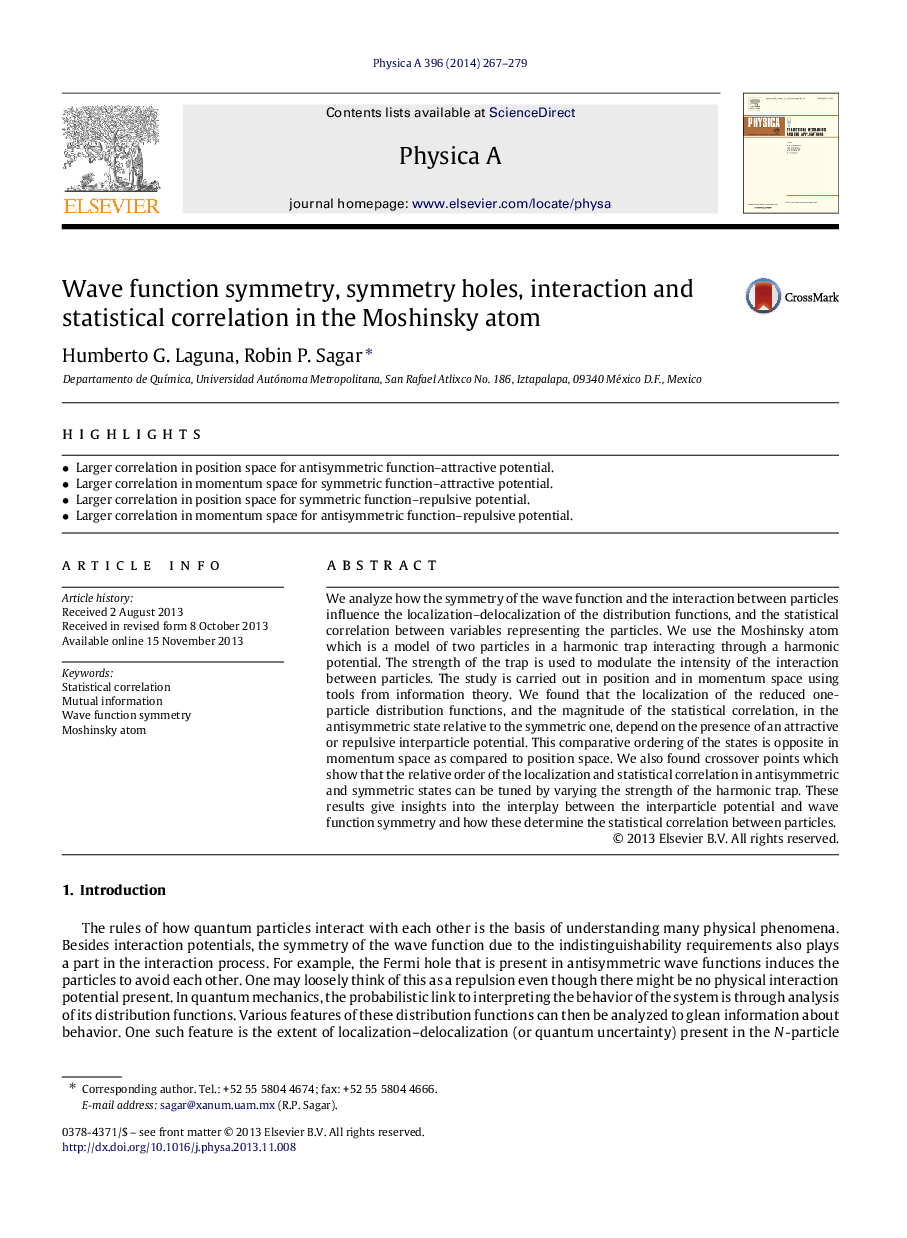| Article ID | Journal | Published Year | Pages | File Type |
|---|---|---|---|---|
| 974791 | Physica A: Statistical Mechanics and its Applications | 2014 | 13 Pages |
•Larger correlation in position space for antisymmetric function–attractive potential.•Larger correlation in momentum space for symmetric function–attractive potential.•Larger correlation in position space for symmetric function–repulsive potential.•Larger correlation in momentum space for antisymmetric function–repulsive potential.
We analyze how the symmetry of the wave function and the interaction between particles influence the localization–delocalization of the distribution functions, and the statistical correlation between variables representing the particles. We use the Moshinsky atom which is a model of two particles in a harmonic trap interacting through a harmonic potential. The strength of the trap is used to modulate the intensity of the interaction between particles. The study is carried out in position and in momentum space using tools from information theory. We found that the localization of the reduced one-particle distribution functions, and the magnitude of the statistical correlation, in the antisymmetric state relative to the symmetric one, depend on the presence of an attractive or repulsive interparticle potential. This comparative ordering of the states is opposite in momentum space as compared to position space. We also found crossover points which show that the relative order of the localization and statistical correlation in antisymmetric and symmetric states can be tuned by varying the strength of the harmonic trap. These results give insights into the interplay between the interparticle potential and wave function symmetry and how these determine the statistical correlation between particles.
